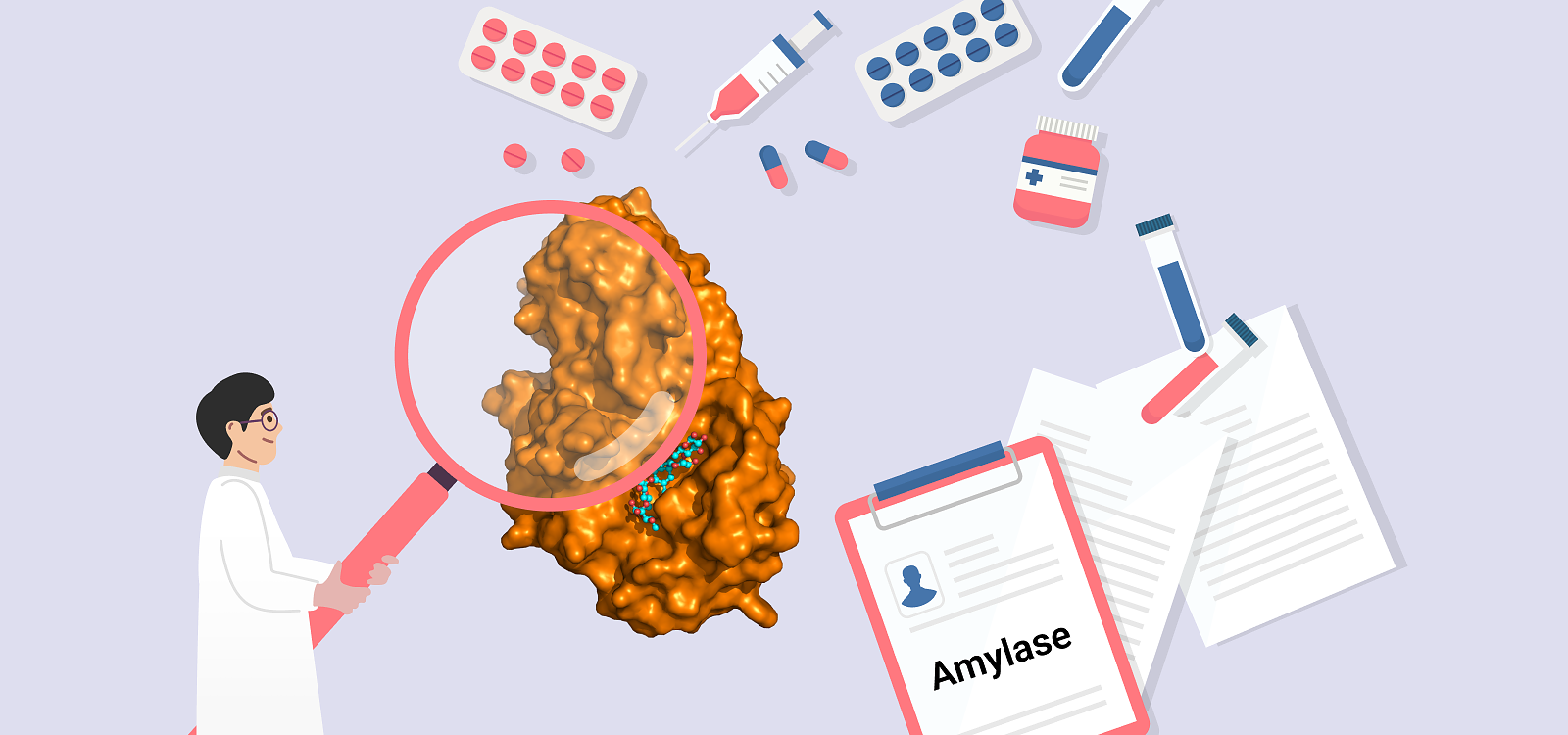Parameter Tuesday: AMYLASE
Amylase is a small enzyme with an important role in breaking down carbohydrates. The breakdown of carbohydrates starts already in your mouth, with the salivary glands producing amylase. It continues further down the digestive tract in the small intestine, with the pancreas also producing amylase. The amylase test is used to determine any problems with the pancreas and other tissue disorders.
Although the amylase test can help determine whether there is a problem with the pancreas, the lipase test is currently preferred by physicians because it's more specific. There is usually a small amount of amylase present in your blood. Since amylase is a very small enzyme, it can be filtered by the kidneys and so appears in urine as well. However, a high value can indicate a problem.
High amylase values normally indicate a problem with the pancreas or salivary glands. In acute pancreatitis, where the enzymes that are normally produced by the pancreas start breaking down the pancreas tissue itself, the amylase levels rise very quickly. The levels in the blood begin to rise 2-12h after the onset, peak after 24h of the attack, and return back to normal levels in 3-5 days. The values are 4-6 times higher than the highest reference value. On the other hand, chronic pancreatitis also causes amylase levels to rise moderately. Due to the process's longevity and the damage done to the pancreas, the levels might drop over time, but this doesn't mean that the disease is no longer present. Amylase levels can also rise due to inflammation of the gallbladder or intestinal tract, peptic ulcers, salivary gland infections, and other medical conditions. Heavy alcohol consumption can elevate amylase levels.
Low amylase levels are mostly associated with liver, kidney, or pancreas problems. People with cystic fibrosis often have low amylase levels. Pregnant women facing pre-eclampsia (high blood pressure in pregnancy) are also prone to having low amylase levels.






